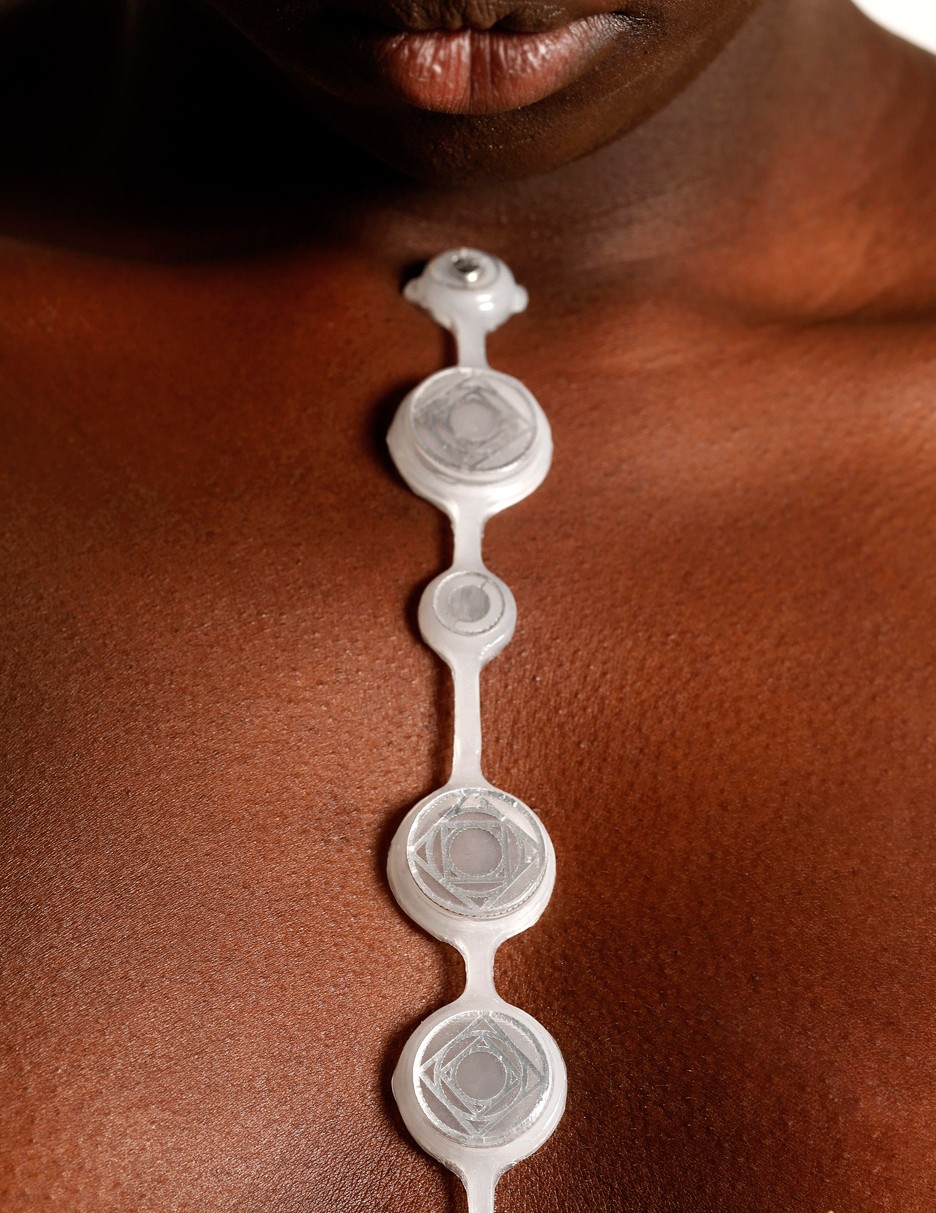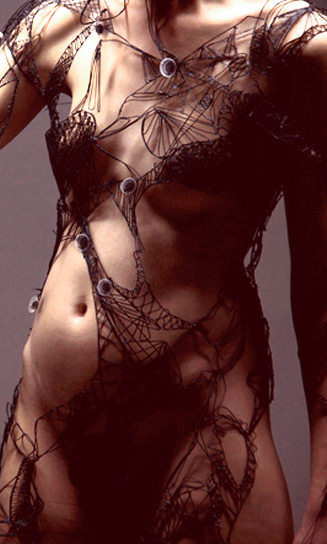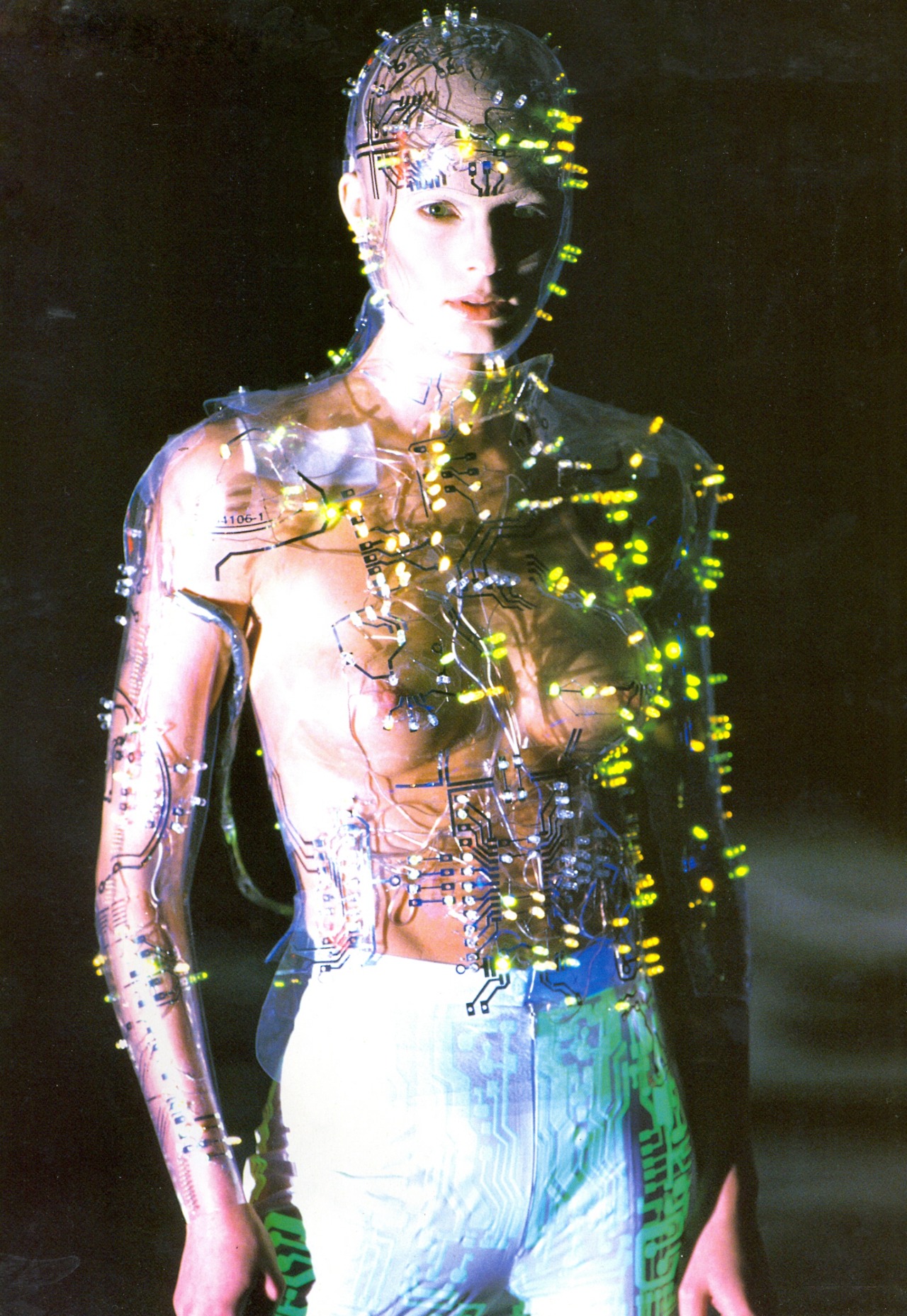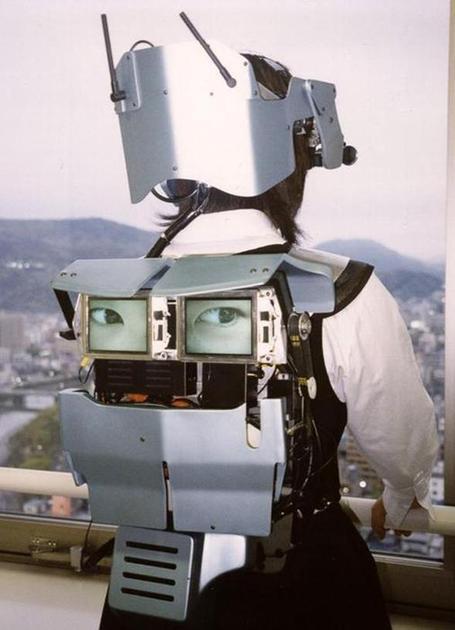Dis-Armor Project
Dis-Armor is the newest in a series of psychocultural prosthetic equipment designed to meet the communicative need of the alienated, traumatized, and silenced residents of today’s cities. It connects contemporary research in two fields: wearable communi- cation technology and prosthetics. In doing so, it counters the dichotomy of the present explosion in communication technology and rampant cultural miscommunication. Dis-Armor offers an opportunity for indirect, mediated communication by allowing its users to speak through their backs. LCD screens, worn on the back, display live images of the wearer’s eyes transmitted from cameras installed in the helmet covering the face. A speaker positioned below the LCD screens amplifies the user’s voice. Attached to the helmet is a rearview mirror, alternatively, a rearview video camera, monitor, microphone, and headphone. These permit the user to see the face and hear the words of the spectator/interlocutor standing behind. Wireless video equipment installed in the helmet further allows two users to work in tandem, showing each other the other’s eyes and broadcasting to each the other’s voice.














